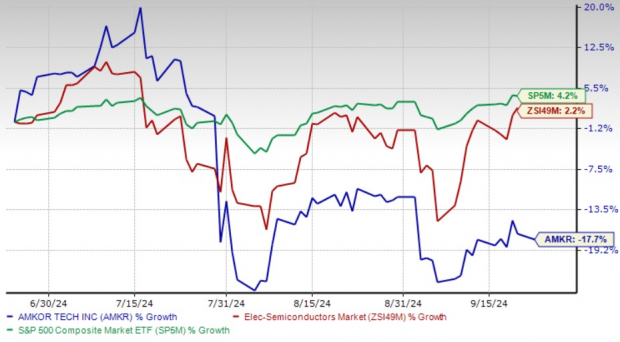As the first week of January 2025 unfolds, investors are presented with new options for Advanced Micro Devices Inc (AMD). The newly available contracts, expiring in 347 days, offer a potential opportunity for sellers of puts or calls to obtain a higher premium compared to contracts with a closer expiration date. The time value, a key determinant in an option buyer’s willingness to pay, is inherently embedded in these contracts, signifying an appealing prospect for market participants.
Specifically, a put contract at the $170.00 strike price stands out, with a current bid of $24.15. By selling-to-open this put contract, an investor agrees to buy the stock at $170.00 while collecting the premium, thus establishing a cost basis of $145.85 (before broker commissions). This offers an attractive alternative to purchasing shares of AMD at the current price of $174.00/share.
The $170.00 strike price signifies an approximately 2% discount to the current trading price of the stock, positioning it as an out-of-the-money contract. As such, there is a 63% likelihood, based on current analytical data including greeks and implied greeks, that this put contract could expire worthless. If this scenario materializes, the premium would translate into a 14.21% return on the cash commitment, or 14.94% annualized.
Simultaneously, a call contract at the $195.00 strike price carries a current bid of $25.35. By selling-to-open this call contract, an investor commits to sell the stock at $195.00, which, when combined with the premium collected, could yield a total return of 26.64% if the stock is called away at the January 2025 expiration (before broker commissions).
Given the $195.00 strike’s position as an approximate 12% premium to the current trading price of the stock, there is a 47% probability, according to current analytical data, that this covered call contract could expire worthless. In such a scenario, the investor would retain both their shares of stock and the premium collected, which would represent a 14.57% boost of extra return, or 15.32% annualized, commonly referred to as the YieldBoost.
The implied volatility in the put contract example is 46%, while for the call contract example, it stands at 45%. Moreover, the actual trailing twelve-month volatility is calculated at 45%, based on the last 250 trading day closing values and the current price of $174.00. Given this data, market participants are advised to explore additional put and call options contract ideas at StockOptionsChannel.com.
Top YieldBoost Calls of the Nasdaq 100 »
Also see:
YieldBoost Ranks By Industry
Funds Holding GOOY
Institutional Holders of CIC




